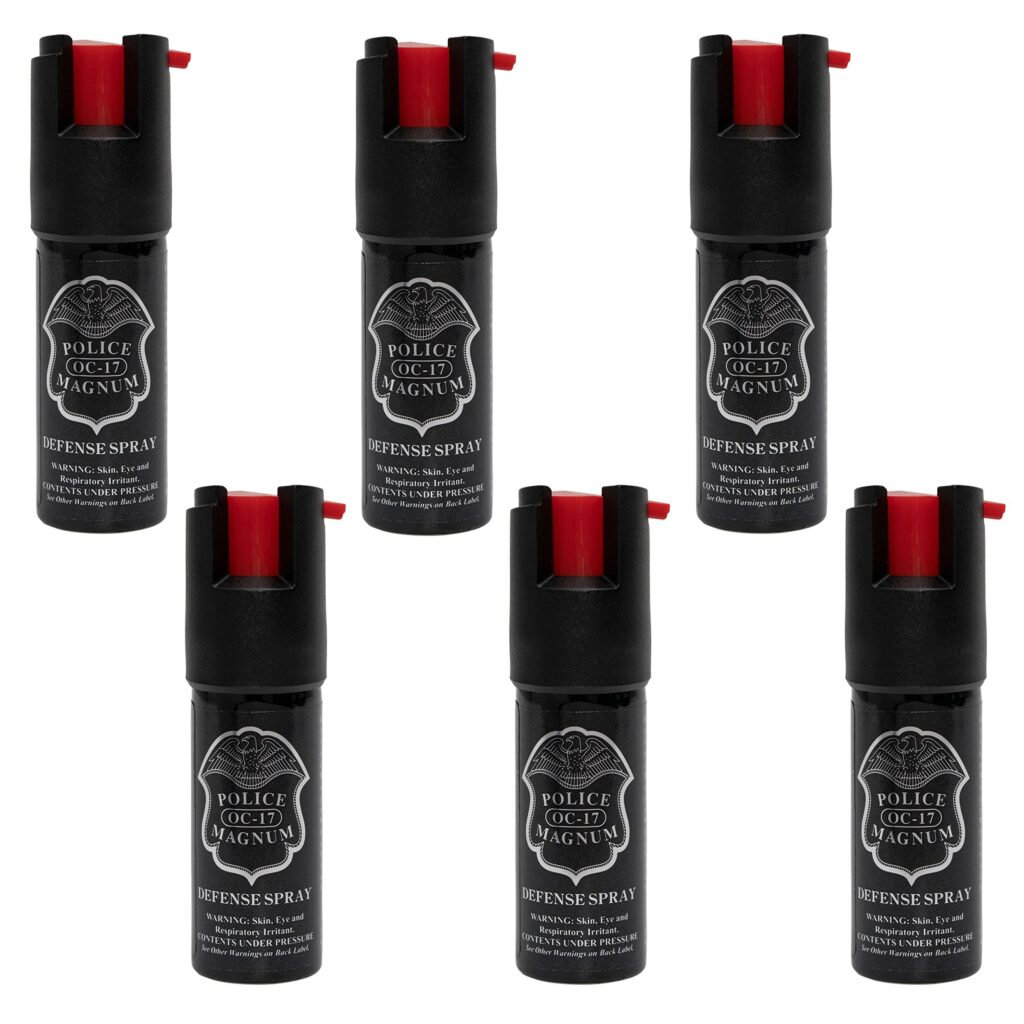Table of Contents
- Comparing the Mechanisms of Pepper Spray and Foam Defense for Personal Safety
- Evaluating Effectiveness and Situational Use Cases
- Health and Safety Considerations When Choosing Defensive Tools
- Expert Recommendations for Selecting the Right Option for Your Needs
- The Conclusion
Comparing the Mechanisms of Pepper Spray and Foam Defense for Personal Safety
When evaluating the mechanisms behind pepper spray and foam defense, it’s essential to understand how each operates to incapacitate potential threats. Pepper spray relies on oleoresin capsicum, a chemical derived from hot peppers that causes intense burning sensations, eye irritation, and temporary blindness upon contact. This immediate reaction impairs an attacker’s vision and breathing, creating a disorienting effect that usually lasts for 15 to 45 minutes. Its aerosolized nature allows for quick delivery over a distance, providing the user with a tactical advantage during confrontations. However, it requires precise aim and is less effective in windy conditions.
On the other hand, foam defense systems utilize a non-toxic, expanding foam that quickly adheres to a target’s skin and clothing, immobilizing their movements and restricting their ability to use their hands or weapons. Unlike pepper spray, foam acts as a physical barrier, creating an immediate obstacle that can reduce the potential for a follow-up attack. This method also has the advantage of lingering longer on the attacker, increasing the window of safety and making it more difficult for them to regain control quickly. However, foam defense tends to have a shorter range and may be bulkier to carry, which can impact its accessibility during unexpected encounters.
- Pepper Spray: Quick-acting, irritant-based, requires accurate aim
- Foam Defense: Immobilizes physically, longer-lasting effect, limited range
- Both rely on non-lethal deterrence, prioritizing user safety
- Environmental factors like wind or crowd density heavily influence effectiveness
Evaluating Effectiveness and Situational Use Cases
When determining which defense tool suits your needs best, understanding the nuances of effectiveness in real-world scenarios is crucial. Pepper spray offers a rapid, intense sensory assault that can incapacitate an attacker from a distance, making it ideal for quick escapes. Its aerosol delivery allows for targeted use, but it’s important to note environmental factors such as wind can affect accuracy. Additionally, the compact size of pepper spray makes it exceptionally portable and easy to deploy in unexpected situations.
On the other hand, foam defense presents unique advantages, particularly in preventing the assailant from removing or wiping the agent away. The sticky texture adheres to the skin and eyes longer, which can extend the attacker’s disorientation and provide valuable extra seconds to retreat. Foam is also less likely to be blown back toward the user, making it safer in confined or windy spaces. Consider these scenarios where foam defense truly shines:
- Close-quarter confrontations where maintaining distance is challenging
- Outdoor conditions with unpredictable wind currents
- Situations requiring prolonged disarming incapacitation
Health and Safety Considerations When Choosing Defensive Tools
When selecting a defensive tool, prioritizing health and safety is paramount. Both pepper spray and foam defense products come with their own set of risks and precautions. Pepper spray typically contains capsaicin, which causes intense irritation to the eyes, skin, and respiratory system. While highly effective at incapacitating an attacker, improper use or accidental exposure can lead to serious health issues such as respiratory distress or chemical burns. Conversely, defensive foams often rely on physical obstruction rather than chemical agents, mitigating some of these risks but potentially posing hazards like skin irritation or inhalation of airborne particles.
Understanding the safety profile of each option can help you make an informed decision. Key considerations include:
- Allergen sensitivity: Check for ingredients that might trigger allergic reactions.
- Environmental impact: Non-toxic and biodegradable options are preferable for minimizing ecological harm.
- Proper training: Familiarize yourself with how to safely handle and deploy your chosen defense tool to avoid accidental injury.
- Legal compliance: Some regions impose restrictions on certain types of defensive sprays or devices; ensure your selection meets local regulations.
Expert Recommendations for Selecting the Right Option for Your Needs
When determining the ideal self-defense tool, it’s essential to balance your environment, experience, and personal preferences. Pepper spray offers a quick deployment advantage, making it highly effective for users who prioritize speed and distance. It’s lightweight, compact, and generally easy to carry, which suits urban settings or situations demanding swift reaction. However, its effectiveness can be diminished by wind conditions or if the assailant is wearing protective gear, so consider if these factors are common in your typical surroundings.
Foam defense, on the other hand, provides a thicker spray that sticks to the attacker’s face, reducing the risk of blowback and increasing the chance of incapacitation. This option is ideal for those seeking more control over the spray direction and who may encounter close-quarters threats. When selecting between these products, keep in mind:
- Legal restrictions in your area regarding the type and strength of self-defense sprays.
- Training requirements for effective use-some sprays require practice for precise handling.
- Storage convenience and accessibility when needed in emergencies.
- Potential for accidental exposure and safety for bystanders or pets.
The Conclusion
In the end, choosing between pepper spray and foam defense ultimately depends on your specific needs and circumstances. Pepper spray offers quick, effective incapacitation, making it a popular choice for personal self-defense. Foam defense, on the other hand, provides a longer-lasting barrier and can help prevent an attacker from advancing, which is especially useful in close encounters or confined spaces. Both have their advantages and limitations, so it’s important to consider factors like ease of use, legal restrictions, and your environment before making a decision. Staying informed and prepared is key to ensuring your safety, no matter which option you choose.Check Our Other Blogs
- StunGun – Your Trusted Source for Stun Guns, Laws, and Self-Defense Tips
- PepperSprayLaws – Your Trusted Resource for Pepper Spray Information
- StunGunLaws – Your Trusted Guide to Stun Gun Legality and Safety




